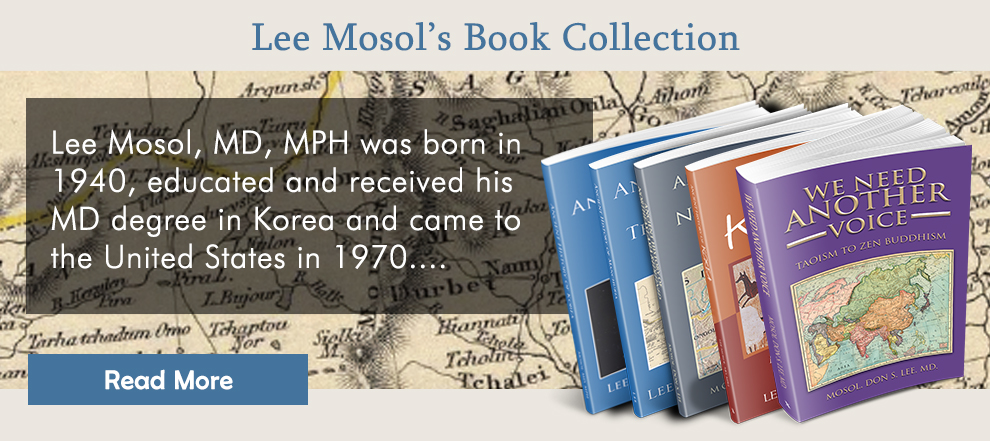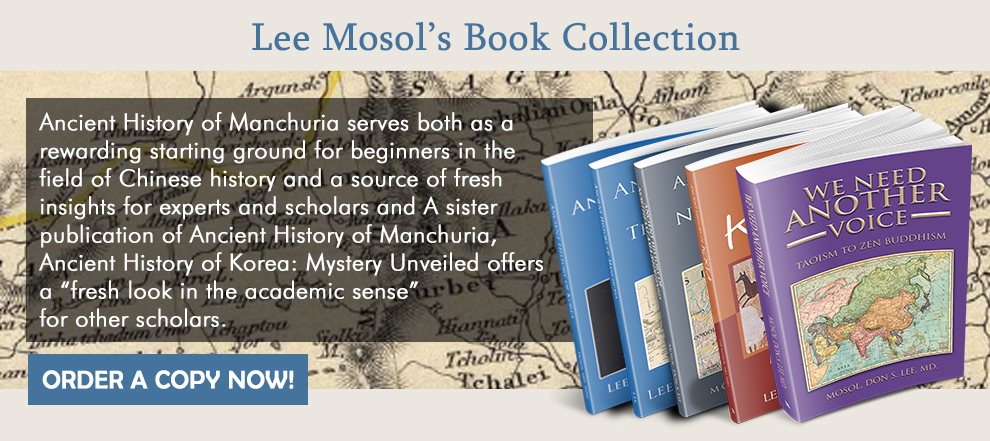The birthplace of Ancient Korea(古朝鮮)-Discussion-5
Main text-5:
Mother of Classic Characters (繁體字) from the Western Zhou:
Sima Qian had read all the record since dawn of YRVC, mentioned the existence of Wu chronicle (禹本紀), and revealed the contents as unfit to the fact presented by the western expeditioner . Those records were before the era of Oracle bone scripts.
Many scriptures have that “閼伯” settled in the east and “實沉” to the west of Hangu-pass . They had started to make engravings.
Although the oracle bone script and Bronze engraving raised from the unsettled origin either Fu Xi (伏羲), Zhuanxu (顓頊) or Emperor Ku, they took different direction in different locals; east and west of the Hangu Pass.
One of the earliest Engraving is Yi-Gwai (利簋) which was made under the order of King Wu for the leader of Sù shèn (肅慎, 濊貊) who had lead the Battle of Muye in 1046 BC . It was unearthed in1978 in the west of Hangu-pass. Another one “西周太師虘簋” which was made during the era of King Xuan of Zhou(周 宣王:827–782 BC) in 1948. Both of them were found in the YRVC where Western Zhou flourished. The Ye-Maek(濊貊) people developed the zhòuwén (籒文) under the supervision of historian Zhou (史籒) who were captured in the north of Shanxi province(中山) by the new comer Zhou clan and participated western Zhou civilization . The leader of the slave was named as “仲山甫”, literally a man from the middle mountain (中山) in the Shanxi province. He got the nick name “樊侯” meaning Caged in Earl. The Shijing has lots of his poems.
The slave (隸, 濊, 獩,穢)descendants moved to the southern Manchuria, built unique culture, and being killed by invaders. As a result, the capital was piled up with skeleton(骨都) which is related to the Korean word Antiquity (骨董品), literally Skeleton Supervised Items. Engraved words were used by the Monk. The Korean said: The Buddhist monk read Jumun (籒文주문을 읽다) outside of my house. Korean still call the scholar as Xiānbēi (선비. 鲜卑) who were master of using more complicated logograms. Ordinary public used very simple one known as Hyangchal (향찰, 鄕札), literally local letters or characters being used by the local officers. Silla and Khitan (契丹) were the offspring of Buyeo. The phrase “手據地竊語” in the section of Buyeo(三國志 夫餘傳) could be a form of Hyangchal.
The westerners accepted the Chinese misinterpretation. They refer Xiānbēi as one of powerful tribes dominated North China Plan during the chaotic period of Sixteen States from 304 to 439 AD.
In fact “Bei卑” means the low class people (public) of Joseon (朝鮮) and the leader (큰, Khan, Gahan 可汗, 太大角干, Hahn) was called Dan Wu (單于) meaning a person onto the altar. The same title had been pronounced as “xiān yú” by Chinese and described with many PSMCs of “선우, 단위” such as “鮮于, 單于, 鮮虞” and so on.
They named the Great Teacher as “仲山甫, 樊侯, 穆仲” in the Shijing (詩經 烝民) has the phrase“古訓是式”who taught ancient words left by the leader of Old Joseon . The historian Zhou (史籒) is the PSMCs of the title Great Teacher Cuó (西周太師虘簋) as seen in the bronze inscriptions (金文) made during the King Xuan era (周宣王: 827 BC-782 BC) . It was found 1941 around the City of Xian. His ancestors and followers as well had been mistreated as seen in the Shijing fú yóu (詩經 曹風 蜉蝣) as a vagabond . Fú yóu is one of many PLCs nomadic tribe recorded as Buyue (胡不與之國, 浮游,扶餘, 夫餘, 扶柳) who was one of several town states belonged to the Old Joseon. They had escaped from the Xiechi-pool (解池)region with the map (鳴條之圖) to the north along the Fen River(汾水, 汾河, 邠) valley and kept trading with Shang dynasty . They came back to the current Xian city region(岐周) which is the birth place of western Zhou during the first year of Wu Yi (武乙: 1147 to 1112 BC) and faced conflict with the Zhou clan (周公亶父)who came a year later .
They changed the original “衣裳𪓐𪓐” to the other PLCs “衣裳楚楚” few logograms in the Shijing fú yóu. The logogram is a compound two (黹, 虘)logograms which is the name of Great Teacher Cuó (西周太師虘) as the King Wu (武王) of Zhou being recorded as one logogram “珷; 珷征商隹” engraved in the trophy commemorating the battle of (牧野之戰)in 1046 BC.
Mozi Jiangu(墨子閒詁 節用上) has explored the logogram and phrases. By combining the names in the (管子) and other scriptures, the historian Zhou (史籒) is the Great Teacher Cuó (太師虘簋) from the Shanxi Province which was a part of Old Joseon and made the original archaic Chinese logograms at the beginning of Western Zhou dynasty . They were recorded as “追: pursue, chase after; expel” in the Shijing . The Shijing has the phrase “追琢其章。金玉其相” and “其追其貊”, that reveals the enslaved people participated in the process of Western Zhou civilization. Chinese glorified it as “周最盛. 成康之治” without naming the engravers, who were the Yemaek people. The semantics of nick name Lord pán (樊: fán fàn 侯) is the same as of the logogram (繁: fán pó pán) as in the (繁體字) which is the standard form of traditional character(正體字). Another word the logogram “繁”is a replace word of “樊” who was the Great Teacher and his Yemaek people. They were the one who started the classic logograms still in used.
Same issue from different angle:
Ancestor of Qin Shi Huang built up a small vasal state in the Cradle of YRVC, where the Western Zhou (西周; c. 1045 – 771 BC) had emerged. They used the Seal script (篆書) also known as Zhòu wén (籒文) developed by Shǐ zhòu (史籒) under King Xuan of Zhou (周宣王: 827-782 BC), and used throughout the Eastern Zhou dynasty. The State Qin took over the symbol of utmost power (鼎) and unified China . Chancellor Li Si (李斯: c. 280 BC –208 BC) under the Qin Shi Huang modified the Seal script to a simplified form known as Small seal script小篆. The Han dynasty continue to use the variant or simplified form of small seal script. Despite of clear evidences that Official and Clerical scripts (署書, 隸書) were two different writing style, they named those two as one, the Clerical Script(隸書), literally writing by the slave. The place where the slave came from was named as the Province of Slave (隸省), that include the mountainous region (連山, 燕山) and northern Hubei Province.
As Qin Shi Huang travelling along the SW shore of Balhae Bay met a man from Yan region (燕人盧生) informed that emperor that Hu(者胡) will destroy (empire)by citing mystical ancient scripture(錄圖書). This mystical scripture had been recorded with many different names such as “鹿圖文, 河出綠圖”and logograms . The most remote source of ancient scripture(錄圖書) is related to Zhuanxu Gao Yang, a mythological emperor (顓頊受學於綠圖), who appears to be the leader of Hongshan culture (紅山文化) around the Southern Manchuria and Inner Mongolia stretching to the north China plan. One branch of Zhuanxu descendants moved down through the Fenshui valley and participated in the YRVC.
Korean claim that the ancient mythical scripture(錄圖書) is the “天符經, 鹿圖文, 神誌文” written with Seal Script and a form of An amulet(符籍) which has been used as a good luck charm by Korean for long time. Both Spirit(神) and body (身) had been used as PLCs. So called “神誌文”by Korean is written as “言身之文” in many scriptures such as “春秋左傳, 國語晉語, 世家晉世家, 說苑” and so on .
South of the Yanshan Mountains and East of the Taihang Mountains (太行山脈) is the Hai River(海河) water shed area and the home land of the Yemaek(濊貊) people who built ancient town state Buyeo (夫餘國) were enslaved . Some of them spread out to the North China plan and assimilated with southerners. They replaced the logogram Maek with many other logograms “陌,貉,貊, 䫉” and “濊” to “隸, 獩, 穢”by adapting PLCs or PSMCs. Book of Sui (隋書) and other scriptures such as “山海經, 水經注”have the name Country of Maek (貊國) in the Northwest of Korean peninsula cross over the Sea of Hahn . The phrase “文者,古之遺文. 隸書 穢史” in the scriptures reveals the facts .
By summarizing those evidences, It is fair to say that the Hongshan culture(紅山文化) is the birth place of Clerical Script(隸書), which has been used in the Manchuria for a long time. Since the southerner revised ancient dictionaries, many logograms had been changed with minor touch. Same logograms are pronounced and interpreted differently as well. The traditional Classic characters (正體字/繁體字) are derived from the clerical Script(隸書) which was engraved by the slaves in the Shanxi Province. They named the battle between the Qin and Jin(秦國,晉國) in 645 BC as of many Hahn territory “韓原之戰”. It is obvious that the Traditional Classic Characters (正體字/繁體字) were initiated by the Yemaek people.
They were the Hahn and Yae-maek people, moved into the Manchuria, and spread out through the sea of Hahn. The Gwanggaeto Stele (廣開土大王碑) has that the Hahn-yae (韓穢) to keep eyes on the tomb. It is appropriate to call the Classic Characters (漢字, 繁體字) as “Hanh-ye Characters (韓穢文字) instead.
End
December 21, 2019
About the Author
Written by Lee Mosol
Retired physician from GWU and Georgetown University in 2010 2011: First Book in Korean "뿌리를 찾아서, Searching for the Root" 2013: Ancient History of the Manchuria. Redefining the Past. 2015: Ancient History of Korea. Mystery Unveiled.
Recent Posts
Recent Comments
- Don S. Lee MD on 부여의 시말:
- Seowa etymologist on Silla from Zhina(Southern China) to Korean Peninsula.
- James Kim on 약우 (若愚)
- James Kim on 약우 (若愚)
- James Kim on 약우 (若愚)
Archives
- January 2025
- November 2024
- May 2024
- February 2024
- October 2023
- August 2023
- June 2023
- May 2023
- March 2023
- February 2023
- January 2023
- August 2022
- July 2022
- April 2022
- March 2022
- January 2022
- December 2021
- November 2021
- October 2021
- September 2021
- August 2021
- July 2021
- June 2021
- March 2021
- February 2021
- January 2021
- December 2020
- November 2020
- October 2020
- September 2020
- May 2020
- April 2020
- March 2020
- February 2020
- January 2020
- December 2019
- November 2019
- October 2019
- September 2019
- August 2019
- July 2019
- June 2019
- May 2019
- April 2019
- February 2019
- January 2019
- December 2018
- November 2018
- October 2018
- September 2018
- July 2018
- March 2018
- February 2018
- December 2017
- November 2017
- October 2017
- September 2017
- August 2017
- July 2017
- June 2017
- May 2017
- April 2017
- March 2017
- February 2017
- January 2017
- December 2016
- November 2016
- October 2016
- September 2016
- August 2016
- July 2016
- June 2016
- May 2016
- October 2015
- September 2015
- July 2015
- May 2015
- April 2015
- November 2014



